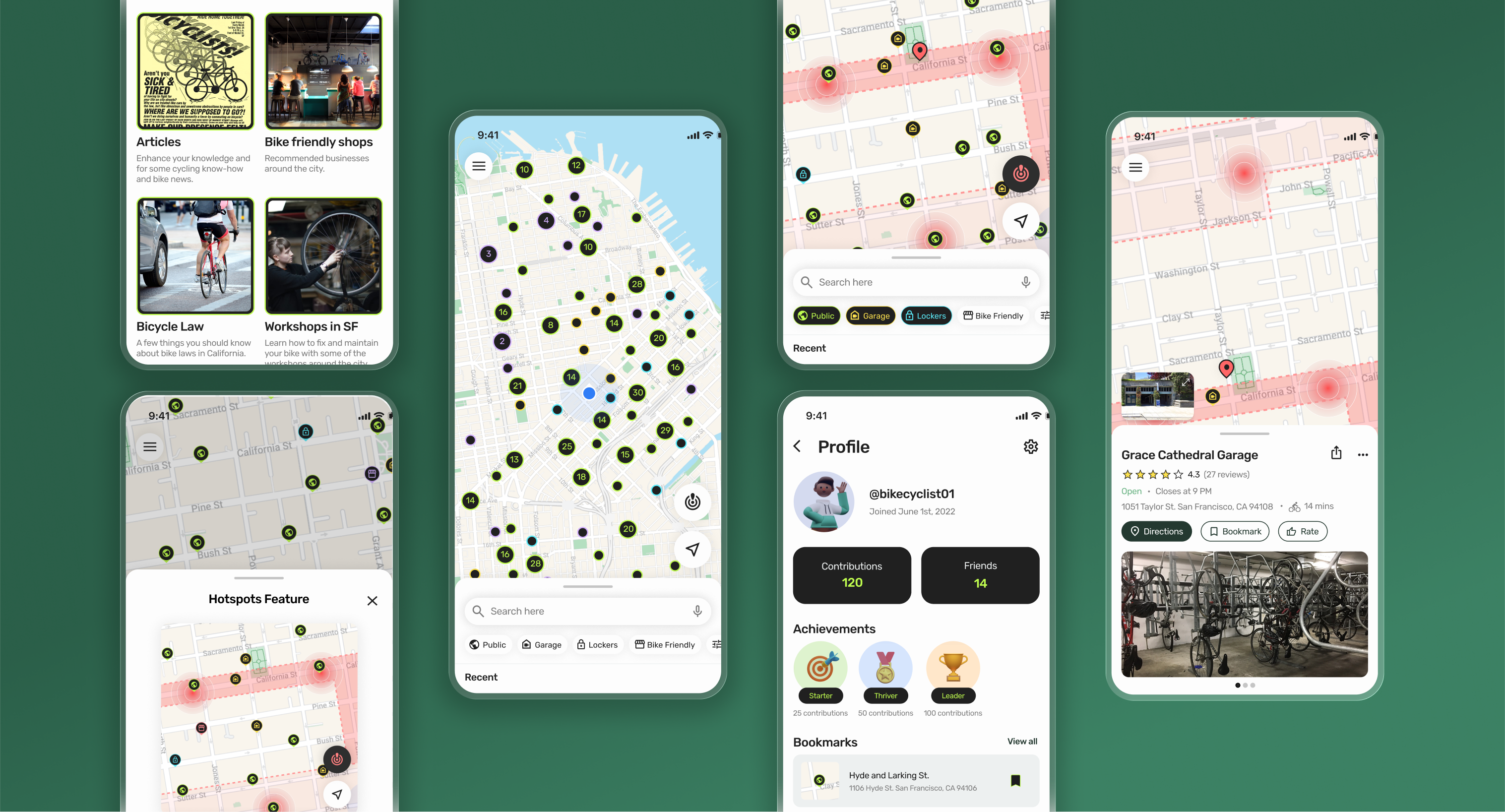
context
role
timeline
tools
tasks
BACKGROUND
I recently started commuting by bike to the office and quickly realized the challenge of keeping a bike safe in a big city like San Francisco, especially when making plans after work. I love cycling—it’s an efficient, fun, and eco-friendly way to get around. But the constant worry about secure parking to avoid theft can be a real barrier. This experience inspired me to explore a solution to help cyclists like myself find safe, convenient parking options.






















